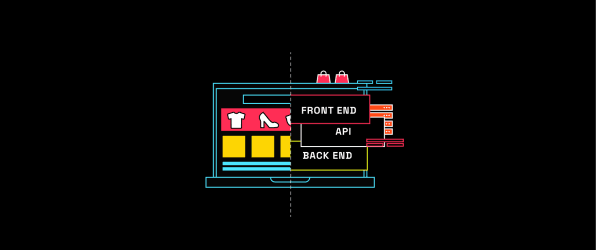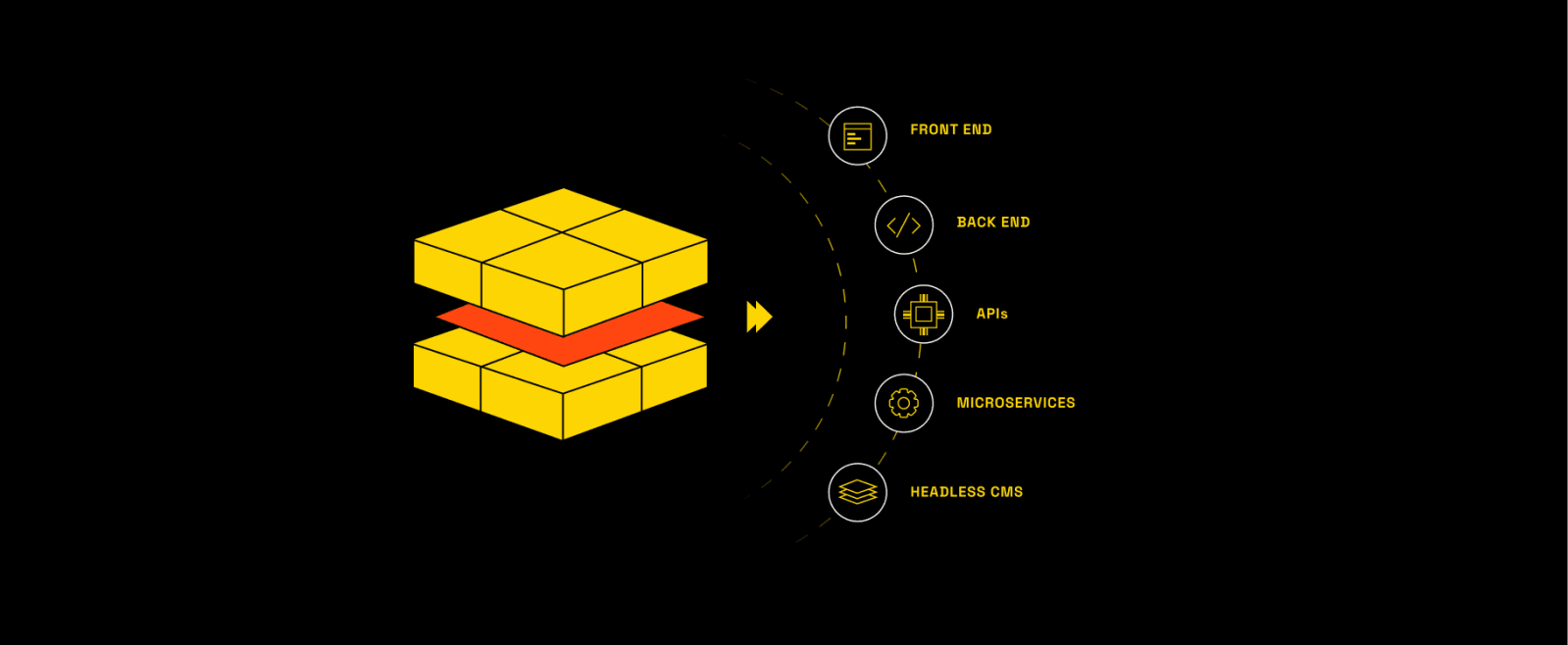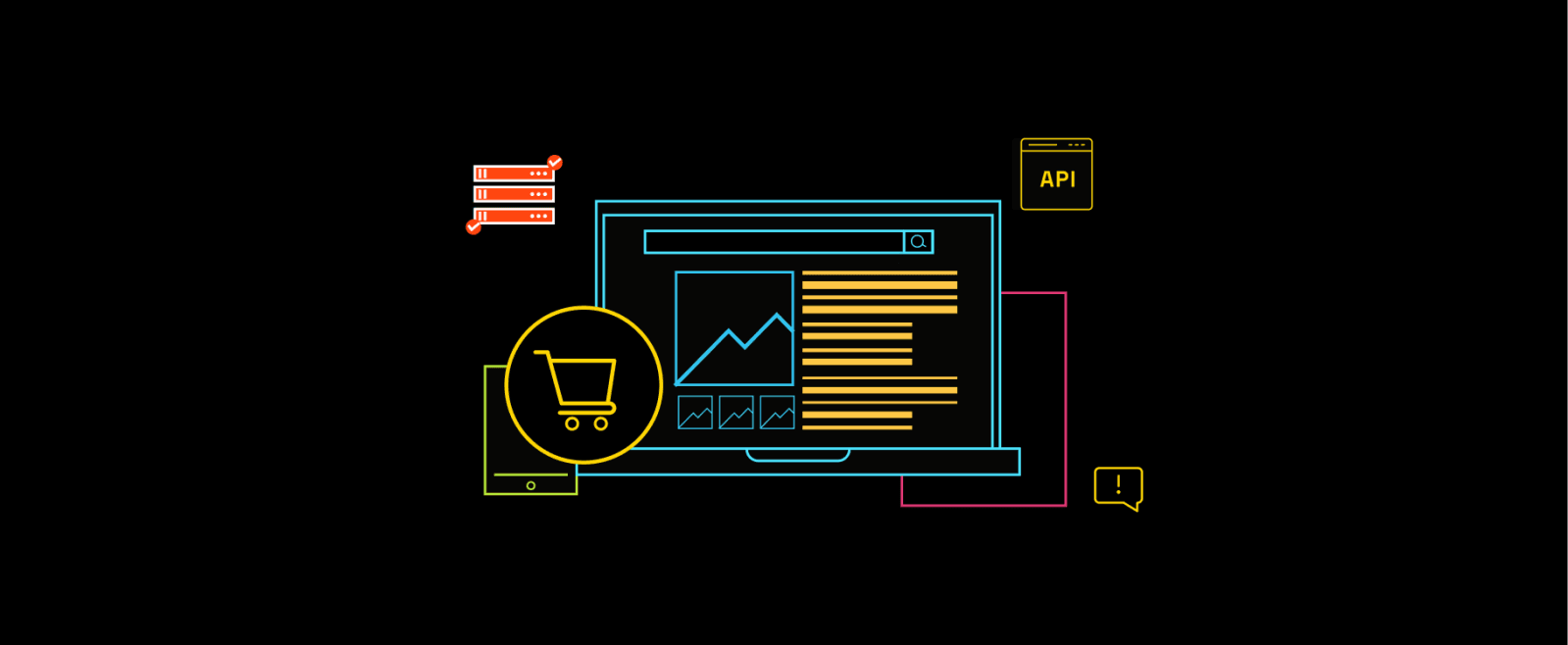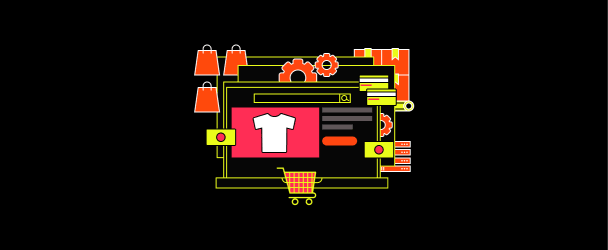Headless Commerce Architecture: Break Free from the Traditional eCommerce Mold and Embrace the Future!
Businesses are witnessing challenges in keeping up with the ever-evolving digital landscape and the various customer touchpoints available today. It's overwhelming and can be difficult to adapt to. But fear not, headless commerce architecture offers a solution to the challenges of traditional eCommerce systems.
In this article, we'll break down headless commerce in simple terms and explore how it can help businesses achieve scalability, agility, omnichannel capability, improved customer experience, and cost and resource efficiency.
We'll also touch upon the key microservices and content management concepts relevant in this context.
On this page:
- What is Headless Architecture
- How does the Headless architecture work
- What are Microservices in Headless Architecture
- Headless CMS, aka Content as a Service
- A 6-step Guide to implementing headless commerce architecture
What is Headless Architecture?
Let's put aside the generic definitions of Headless Architecture that we've all read online and get to the heart of what it really means.
At its core, Headless Architecture is about decoupling the logical interrelationships between a system's components.
 Architecture of Headless Commerce
Architecture of Headless Commerce
This means separating the presentation layer (UI) from the business logic (backend services) so that they communicate through APIs without strict dependencies.
In the headless commerce architecture diagram, the front-end layer consists of various channels where customers can interact with the business, such as websites, mobile apps, and social media.
The API Orchestration Layer sits between the front-end and back-end, acting as the interface connecting the two.
Finally, the back-end layer consists of various microservices that handle the business logic, such as product catalogs, order processing, and payment processing.
By decoupling these layers, high-volume brands can leverage the agility and flexibility they need to provide unrivaled omnichannel experiences unencumbered by underlying platforms and systems. published
 Detailed Architecture of Headless Commerce
Detailed Architecture of Headless Commerce
This translates to endless possibilities for customization, faster time-to-market, and enriched customer experience.
That's why enterprises and businesses in the eCommerce space are adopting the headless approach. They get to realize the best of both worlds from a marketing and commerce standpoint.
How Does Headless Architecture Work?
Ever wonder why Legos are so amazing and popular?
They are more than just colorful building blocks - they're a versatile, value-driven system of play that has captured imaginations and retained popularity for generations.
And believe it or not, the same concept lies at the heart of headless API architecture. The beauty of Headless Architecture lies in its ability to construct streamlined systems tailored to a business's specific needs.
It's like building with digital Lego blocks - merchants can piece together loosely coupled elements to create a best-of-breed stack that meets their unique requirements.
Like with Lego blocks, the individual components of the Headless stack can be added, removed, or altered as needed. This level of flexibility is made possible thanks to the "headless" API, which serves as the glue that holds everything together.
The "headless" API allows merchants to connect disparate services in a way that's seamless and easy to manage.
Whether it's integrating a new payment gateway or adding a chatbot for customer support, the "headless" API ensures that these services can be easily plugged into the Headless stack without disrupting the overall system.
By leveraging Headless API architecture, businesses have the freedom to choose the best way to build their frontend layer. You can use the latest technologies and services without being tied to any specific platform or technology stack.

This level of flexibility and agility is essential in today's fast-paced digital landscape, where businesses need to be able to pivot quickly to stay ahead of the competition whether they are b2c, b2b, b2b2c, or b2e.
What are Microservices in Headless Architecture?
Imagine building a robot out of Lego blocks. Each block represents a different function, like the arm, the leg, or the head.
Imagine building a bunch of single-function robots and then combining them to create a super robot with all the functions you need.
That's what building microservices is like.
You start by building a bunch of single-function applications that can work independently, just like single-function robots. Then, you combine them to create a system that has all the functions you need, just like the super robot.
Microservices in Headless eCommerce can be combined in different ways to develop innovative new features and services.
Let's say an eCommerce business wants to add a new payment gateway to its website. With microservices, they can build a self-contained payment processing service that can be easily plugged into their existing architecture. This means they can add new functionality without re-engineering their entire system.
Similarly, suppose an eCommerce business wants to add new products to its website. In that case, they can use microservices to build a product management service that handles all the backend tasks related to product management.
This service can then be combined with other services, such as the shopping cart and checkout services, to create a seamless user experience.
That's the beauty of microservices. Their modular and self-contained nature makes adding or removing features easy without impacting other parts of the system. eCommerce businesses can be more agile and respond quickly to changing customer needs and market trends.
Using microservices allows eCommerce businesses to enjoy greater flexibility, scalability, and agility. They can quickly adapt to changing market conditions and customer needs without overhauling their system.
Headless CMS, aka Content as a Service
The experience layer of the headless eCommerce framework is all about how customers interact with a business. It's like the front of a store that customers walk into, where they can browse products and make purchases. In the digital world, the experience layer includes website UI, mobile apps, and other digital marketing channels. To enable the headless experience layer, businesses need digital experience platforms, including Content Management System.

Content as a Service has emerged as a popular variant of headless architecture. So, it's only fair to embrace the headless experience for web content and digital assets, with lightweight UI frameworks becoming the favorite.
Headless CMS, built on an API-first approach, the modules are engaged for setting up content and workflows. It has rich and customizable UX, multi-channel publishing, and low operating costs. And architecturally, it is a typical cloud-centric solution that businesses can deploy through PaaS or SaaS.
Major platforms have also evolved in their offerings of CMS capabilities as part of DXPs, with variants like content fragments while enabling mark-ups and layouts.
Mark-ups and layouts are elements of website design that determine how content is displayed on the page. By offering mark-ups and layouts, Headless CMS allows businesses to create a more customized and engaging customer experience that's easily manageable across various channels and devices without relying on a developer team.
So, here you have a choice in how to adopt a CMS that suits your business needs.
It could be a conventional front-end on a CMS container where UI components will merge into HTML but still offer content personalization.
Or you can adapt a completely decoupled architecture for the best front-end performance.
It is worth mentioning that REST APIs play a crucial role in enabling eCommerce platforms to deliver a seamless and personalized customer experience across multiple channels. By using a headless CMS with REST APIs, businesses can retrieve data from the repository and serve it to the end-users through different channels such as mobile apps, websites, and chatbots.
This helps deliver the right content to the right channels at the right time, enhancing the overall customer experience.
In addition, many eCommerce platforms have evolved their offerings of CMS capabilities as part of DXPs, with variants like content fragments.
Therefore, businesses have a choice in how they want to adopt a CMS that suits their needs.
They can opt for a conventional front-end on a CMS container offering content personalization or a completely decoupled architecture for the best front-end performance.
Regardless of the approach chosen, it is important to have a content delivery system that is both scalable and flexible, enabling businesses to manage their content seamlessly and deliver personalized experiences to their customers. Strapi and Contentful are among the most popular headless CMS choices in 2023.
A 7-step Guide to Implementing Headless Commerce Architecture
Step 1: Assess Your Business Needs.
Determine what you want to achieve with headless commerce architecture. Next, identify what areas you want to improve in your eCommerce platform and what features you want to add.
For example, your goal can be to improve the overall customer experience of your e-commerce store and to increase revenue by providing a more personalized shopping experience. Start by monitoring your competitors, seeing if there are any areas where you can differentiate yourself.
Step 2: Choose a Headless CMS.
Choose a headless CMS that suits your business needs. Look for a CMS that can provide a customizable user experience, support multiple channels, and provide low operating costs. Contentful can be a great choice as it has a flexible API and can integrate with other services you use, such as Shopify.
Look at reviews and comparisons of different headless CMS options to help you make an informed decision.
Step 3: Build Your Frontend Choose a framework to build your frontend.
Decide on the technology stack you want to use and what components you want to include. You can use popular frameworks with large developer communities like React, Vue.js, or Angular.
Conduct a competitor analysis to determine what other companies in your industry use. Then consider the strengths and weaknesses of different frontend technologies.
Step 4: Build Your API Orchestration Layer
This layer connects your frontend to your backend services, including your headless CMS, ERP, PIM, and other third-party services. You can use MuleSoft's Anypoint Platform to manage your API layer because it lets you connect different services and systems efficiently.
Also, review other API management platforms and consider factors like ease of use, scalability, and cost.
Step 5: Connect Your Backend Services
Connect your backend services to your API orchestration layer. Ensure that your services are compatible and can communicate seamlessly with each other. AWS can be an excellent choice for the hosting platform as it offers scalable infrastructure and a wide range of services you can integrate with your stack.
Step 6: Integrate your existing systems and services
Take note of all the systems and services your eCommerce store employs, like the customer relationship management (CRM) system. Then, it will be easier to consider the next steps in integrating them with the new architecture.
Step 7: Test and Launch Your Headless eCommerce Platform
Test your eCommerce platform thoroughly to ensure it works smoothly and provides the desired user experience. Then, launch your platform and continuously monitor its performance to identify areas for improvement and make iterative changes.
Headless Glossary
Here's a quick glossary of some terms you might have come across while learning about headless commerce:
- Monolithic Systems: A type of software architecture where the entire application is built as a single, tightly coupled system. Changes to one part of the system can affect others, making it difficult to scale or update.
- Microservices: A type of software architecture where applications are broken down into more minor, independent services that communicate with each other via APIs. This makes it easier to scale and update individual services without affecting the entire system.
- **API Orchestration Layer:**A layer in a headless architecture that manages the interactions between different microservices and the front-end application.
- Monolith: A term used to describe a single, extensive application that is difficult to modify or update.
- Time-to-market: The time it takes for a product or feature to be developed, tested, and released to the market. In eCommerce, a faster time-to-market can be a competitive advantage.
Conclusion
In today's fast-paced digital landscape, it's more important than ever to stay ahead of the curve and focus on providing seamless customer experiences.
Working with an eCommerce agency, I've seen businesses struggle to leverage the agility and flexibility needed to support their evolving needs.
That's why we offer consultancy services on headless solutions that can help your business overcome the challenges posed by traditional and monolithic systems.
By adopting a headless architecture, you can gain the flexibility to create tailored solutions that meet the unique needs of your customers across multiple touchpoints.
So, if you want to take your eCommerce business to the next level, consider a headless commerce architecture and stay ahead.
FAQs
What is an Example of Headless Commerce?
The e-commerce platform Shopify Plus is an illustration of headless commerce since it enables companies to use APIs to decouple the front-end presentation layer from the back-end operations.
What are the Components of Headless Commerce?
The frontend, API layer, and backend are the three main components of Headless Commerce. Customers interact in the frontend, while the API layer links the front and backend. All business logic and data processing take place in the backend.
How do I get Started with Headless Commerce?
You have two choices: upgrade your e-commerce platform with APIs or migrate to a SaaS solution. If Shopify or Adobe Commerce hosts your current store, you can go headless using their extensive API libraries. You must choose a headless CMS for both alternatives to deliver content across numerous channels by syncing APIs. It would help to have headless professionals by your side because it is a drawn-out process.
What are the Types of Headless Architecture?
Two forms of headless commerce architecture are frequently distinguished:
- A wholly decoupled design; and
- A hybrid decoupled architecture.
The front and back ends are independent in a fully decoupled design, whereas some dependencies are still present in a hybrid decoupled architecture.




